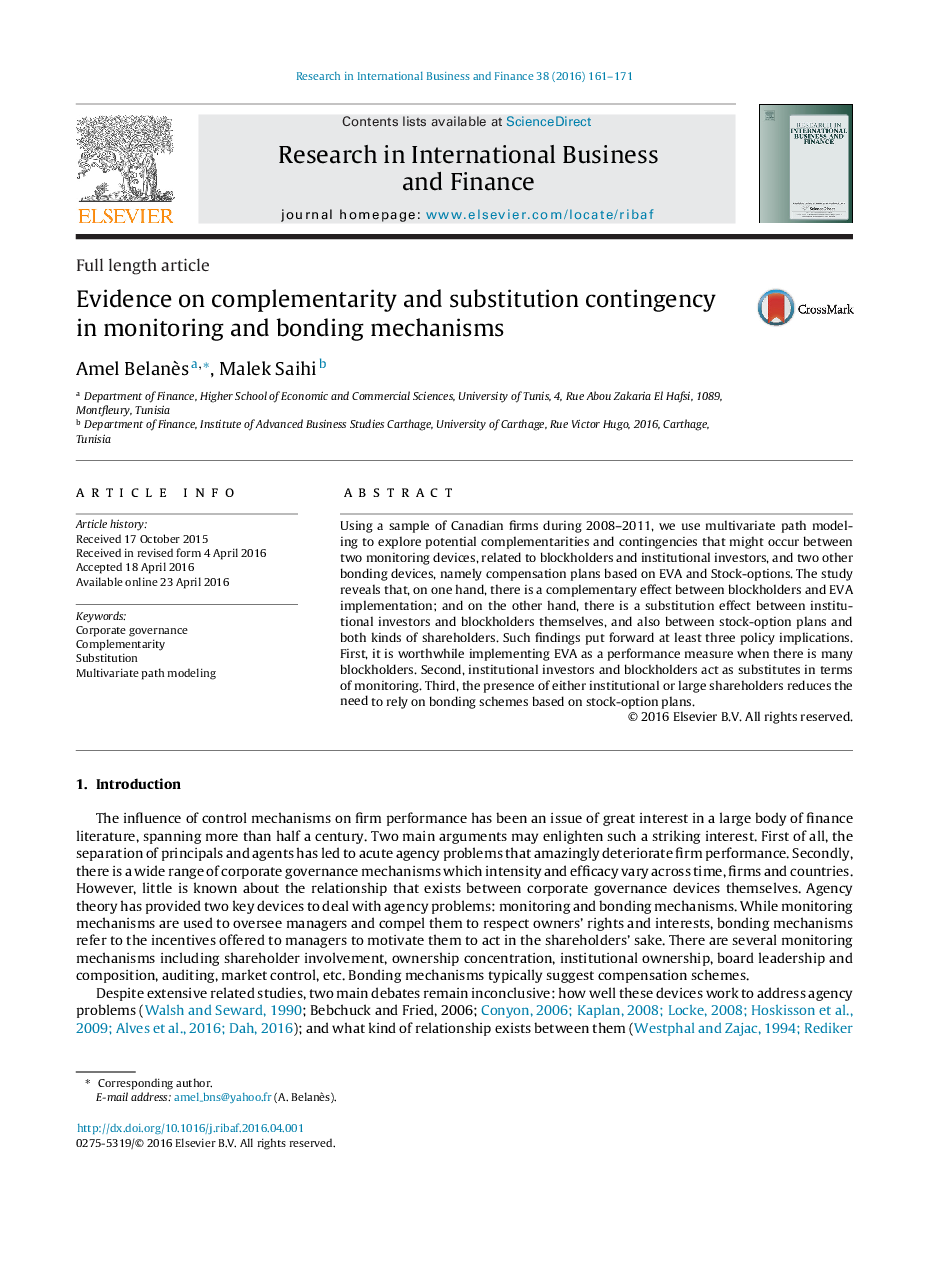| Article ID | Journal | Published Year | Pages | File Type |
|---|---|---|---|---|
| 1003011 | Research in International Business and Finance | 2016 | 11 Pages |
•This paper addresses the following issues within Canadian firms: (1) the interrelations among controlling and bonding mechanisms; (2) the determinants of governance mechanisms.•Using the multivariate path modeling, we find strong evidence of substitution and complementary effects among corporate governance mechanisms.•There is a complementary effect between blockholders and EVA implementation; but a substitution effect exists between institutional investors and blockholders themselves, and also between stock option implementation and both kinds of shareholders.•The corporate governance structure of each firm would reflect the trade-off between the costs and benefits of several corporate governance mechanisms.
Using a sample of Canadian firms during 2008–2011, we use multivariate path modeling to explore potential complementarities and contingencies that might occur between two monitoring devices, related to blockholders and institutional investors, and two other bonding devices, namely compensation plans based on EVA and Stock-options. The study reveals that, on one hand, there is a complementary effect between blockholders and EVA implementation; and on the other hand, there is a substitution effect between institutional investors and blockholders themselves, and also between stock-option plans and both kinds of shareholders. Such findings put forward at least three policy implications. First, it is worthwhile implementing EVA as a performance measure when there is many blockholders. Second, institutional investors and blockholders act as substitutes in terms of monitoring. Third, the presence of either institutional or large shareholders reduces the need to rely on bonding schemes based on stock-option plans.
